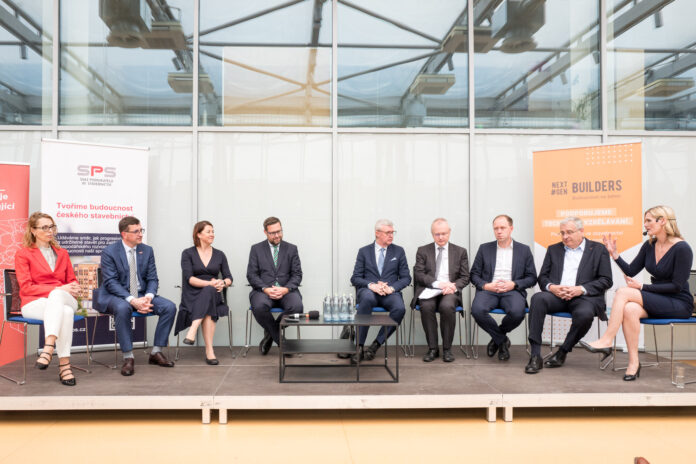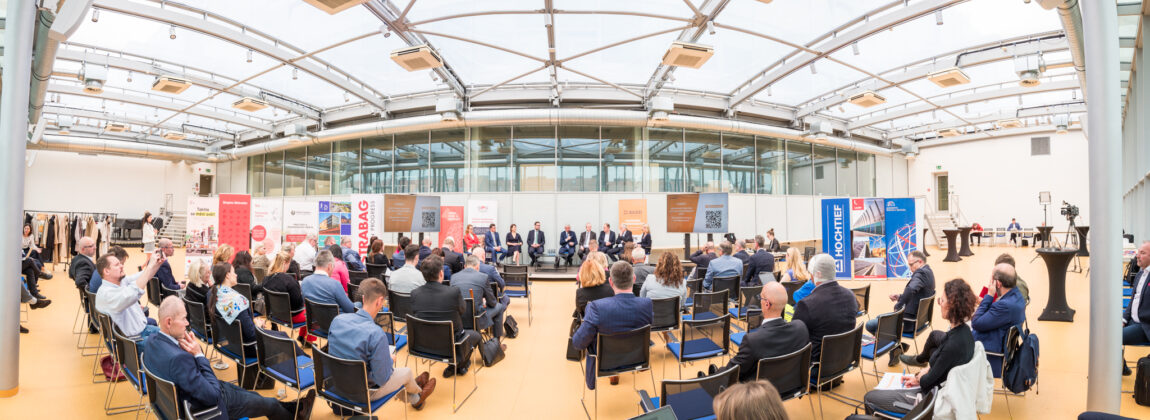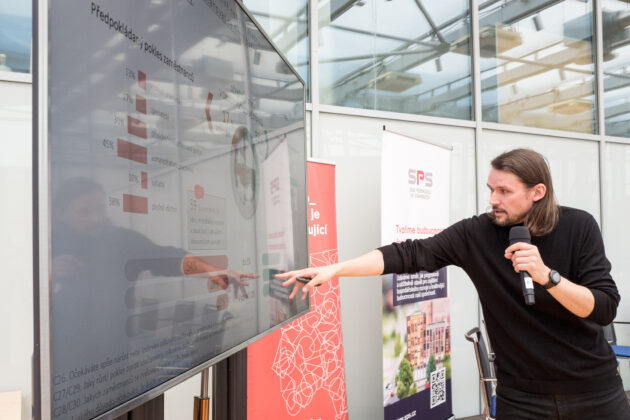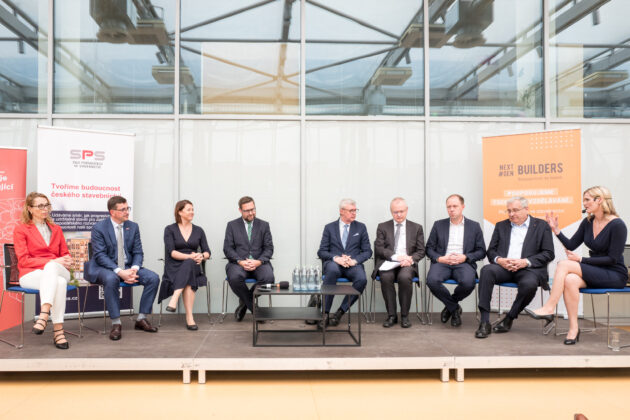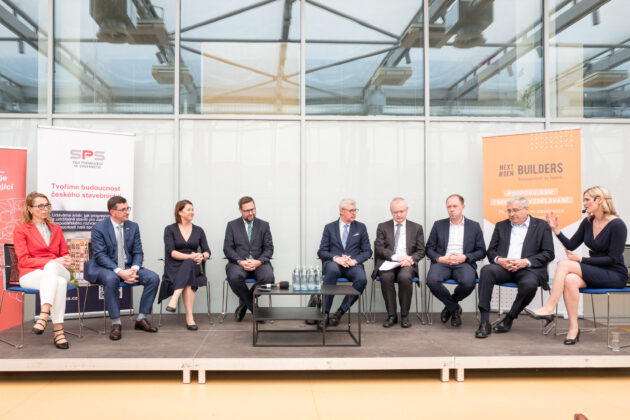Prague, May 30, 2025 – The Czech construction industry is heading into a deep workforce crisis that can no longer be solved through minor adjustments. Thousands of craftsmen, technicians, and designers are missing. If the government doesn’t ensure systematic support for technical fields, in a few years there may be no one left to carry out even key public infrastructure projects. Experts, school representatives, and industry leaders agreed on this at the NextGen Builders conference organized by the Association of Building Entrepreneurs (SPS) and the National Center for Construction 4.0, with support from the Ministry of Industry and Trade.
According to current SPS data, the Czech construction market lacks approximately 40% of needed vocational graduates, nearly 80% of high school graduates, and almost 60% of university-educated professionals each year. Overall, more than 74,000 skilled workers will be missing in technical professions within five years. If the trend continues, it will threaten not just industry growth but also the achievement of strategic state goals.
“Company demand is growing by 18% year-over-year, but the male workforce is virtually depleted. Their willingness to change jobs is minimal, and more than a fifth of job ads receive no response at all,” said Alma Career analyst Tomáš Ervín Dombrovský. The solution, according to him, lies in more effective use of existing capacities, investment in digitization, and efforts to keep experienced people working even beyond retirement age. But Czech companies remain far below average in this area.
The challenge of hiring qualified staff was confirmed by OHLA ŽS: “When recruiting for specialist positions, we often see a lack of relevant responses. The CVs we receive frequently don’t match the requirements in the job posting, and the candidates‘ profiles are often unsuitable. We’re trying various search tools, but especially for skilled trades like bricklayers or carpenters, responses remain insufficient,” said HR manager Lenka Slouková.
Foreign workers as a solution? Helpful, but the system is lagging
Hiring foreign workers is one possible way to ease the workforce shortage. According to SPS data, the largest share of foreign construction workers are Ukrainians. Out of a total of 415,000 workers in the sector, 45,000 are from Ukraine – over 10%.
However, Karin Bílková of Strabag pointed out the challenges: “Without Ukrainians, we’d be lost, but we desperately need a functioning system for cooperating with foreign workers. Language barriers are also a problem – especially in manual jobs where communication is key. Many workers don’t speak Czech or English, and misunderstandings can lead to major issues.”
Experts also warn the current process of accepting foreign workers is slow and inflexible. According to Deputy Speaker of the Chamber of Deputies Karel Havlíček, the solution could be a “reverse system”: “I support the idea of admitting foreign workers as quickly as possible. Then we can thoroughly check if they meet all the requirements – and remove them if not.”
However, relying on foreign labor to fill gaps in Czech construction is at best a partial solution. That’s why experts agree the key is training domestic professionals – although the trend is moving in the opposite direction.
Youth avoid technical fields, scared off by math
Young people increasingly prefer humanities, confirmed by Czech Statistical Office (ČSÚ) data. “While the total number of university students has grown by 55% since 2001, the number of students in technical university fields has dropped by 27%. If this trend isn’t reversed, it will seriously endanger not only the sector’s development but the whole industry,” warned SPS technical director Pavel Ševčík.
A similarly alarming trend is visible in technical high schools, especially outside of Prague. Many are currently running second and third rounds of admissions, despite being in the peak years of large student cohorts.
Challenging math is one reason many students shy away from these fields. “The knowledge level of 9th graders varies wildly and often doesn’t meet our standards – even though we’ve already lowered the bar,” said Marie Plíhalová, principal of SPŠ Dušní. This is why school leaders are calling for regular testing in primary schools.
The lack of interest in vocational and technical fields is also driven by a shortage of hands-on learning in elementary schools and misconceptions among both students and parents.
Kids lack exposure to skilled trades – private projects fill the gap
Many primary school students have no idea what technical professions involve. Workshop classes have disappeared from curricula, and many children don’t even encounter manual work at home. As a result, large construction companies and privately funded education projects are stepping in to provide outreach.
For example, the Stagram project introduces construction careers directly in schools. “We give a free presentation, explain how construction works, what jobs are involved. It helps students see the field as a real option for the first time,” said founder Tadeáš Salaba.
Workshops by Profimentor of Trades Michal Baláž, in cooperation with SPS, have had similar success. Students get to try out real tools during lessons. “The kids love it. There’s huge demand for these workshops,” Baláž says.
The future lies with schoolers
Although much of the focus is on elementary schools, experts agree the real future lies with even younger children.
“We need to focus on kids who are still in school. Right now, they have no idea what construction is – but they’ll be the ones building our nuclear plants, high-speed rail, and affordable housing in the future,” said Radoslav Sovják, director of the National Center for Construction 4.0.
Due to declining demographics, every graduate will soon have to replace two retirees. That makes the career choices of young people even more critical.
Why choose a technical or skilled trade career?
-
“Scarcity drives value. It’s already clear that quality tradespeople will be in short supply – and that means their wages will go up,” said Metrostav HR director Ladislav Profota.
-
“While ‘soft’ fields are being shaken up by AI, construction jobs won’t be replaced anytime soon,” added Deputy Minister of Education Jiří Nantl.
-
“Construction lets people directly shape their surroundings and leave behind tangible results that last decades,” concluded Hochtief HR director Kateřina Kopecká.
Without STEM support, progress stalls
Representatives from both businesses and schools agree that technical and skilled trades must be seen as a strategic national priority. “We need strategic management of the education system, better coordination between schools, companies and the state, more career guidance, dual education programs, and real-world success stories,” summarized SPS president Jiří Nouza.
Support for technical education was also emphasized by former Education Minister and current chair of the National Accreditation Bureau Robert Plaga: “Investing in education pays off – even on debt. The benefits take time, but they multiply and pay back the state. The government must raise this issue across the board – talk to employers, parents, and make the system more attractive with better incentives.”
SPS Recommends 8 Key Actions:
-
Highlight construction as a career with long-term prospects and essential to meeting national strategic goals.
-
Tailor public support for technical and vocational education to meet the needs of construction and industry.
-
Support key trades and technical fields through scholarships and incentives – including partnerships with employers.
-
Use international models to modernize education and implement dual education.
-
Align education system capacity with employer needs.
-
Foster partnerships between companies, schools, and students.
-
Improve awareness among parents and students about construction careers.
-
Reduce administrative, financial, and time burdens for admitting foreign students and workers; support long-term stays.


